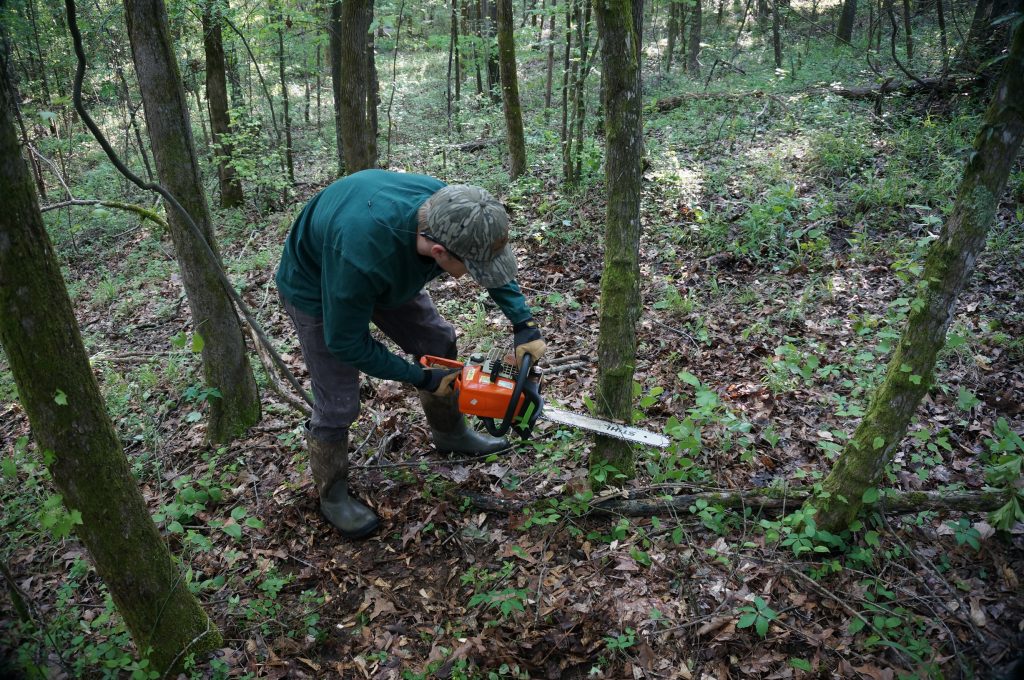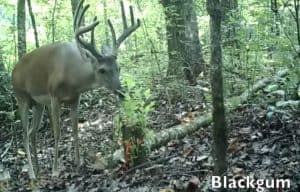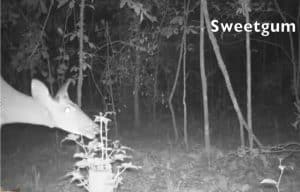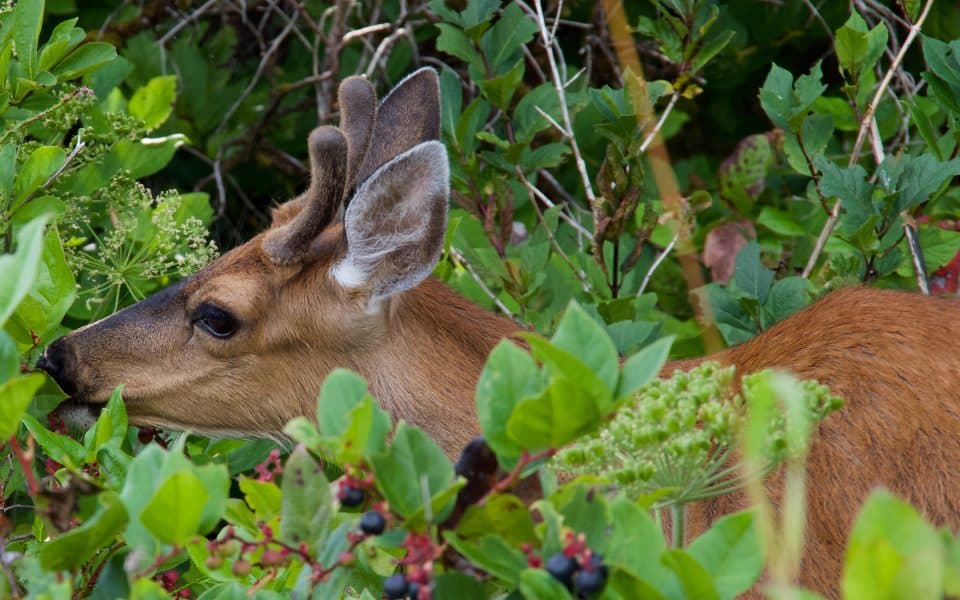If you keep a management calendar, you might have “Fix Seasonal Mismatch” highlighted during July, August, and September. White-tailed deer search out and select better quality forages, ones with good nutrient density (that is, higher concentrations of protein, phosphorus, and other nutrients). Their search becomes harder as plant quality naturally declines through summer, simultaneously they need increased nutrient requirements supporting antler growth, late gestation, and lactation. Actions to fix the seasonal mismatch often take place in previous seasons and years, but what if there’s a solution you can use just prior to and during the seasonal mismatch to create summer forage for deer?

We’ve talked about minimizing the seasonal mismatch using large-scale prescribed burning at different times of the years. We showed that deer “follow the protein” instead of going where there was the most biomass. In other words, deer foraged in areas with less amounts of forage biomass, provided the forage deer were seeking was significantly greater in crude protein. But, you don’t have to rely only on large-scale prescribed burning to create patches of attractive forages.
Here we present a way to help produce nutrient dense forages at much smaller scales by mechanically stumping mid-story hardwoods with limited commercial value. We’ll explain how you can improve forage quality and quantity in closed-canopy forests, increase use of timber not normally preferred by deer, provide a natural attractant for fall hunting, and give yourself a fun, rewarding means of actively improving your property.
Most gamekeepers love to piddle on their property — some tractor time is a great way to decompress. We’ve also obtained a lot of decompression running a chain saw, especially when the act of cutting is combined with a hardwood midstory tree that has no commercial value and is shading out desirable forages. We knew from observations and some previous research that deer find resprouts highly palatable, so we wanted to evaluate them in a controlled experiment.

During June, we mechanically cut trees of three common species. We cut trees with a diameter of 6 to 8 inches at about 12 inches above the ground. We selected species with a range of browse preferences (high, blackgum; moderate, red maple; and low, sweetgum) and monitored their resprouts for nutrient density, biomass, and selection by deer. We compared sprouts during the current growing season and the second growing season after cutting with leaves from trees we didn’t cut.

We expected a positive nutritional response and deer use for black gum, our highly preferred species, and for red maple, a moderately preferred species in our region. We had minimal expectations for sweetgum, our least preferred species; we included it mostly because we like to kill sweetgum! But you know, if we could always predict results accurately then research wouldn’t be nearly as interesting.
Nutrient density increased dramatically over normal tree leaves for all three species for two growing seasons! Crude protein values of sprouts were 2 to 5% higher than normal leaves, and the normal values reflect deer preference, with blackgum the highest protein (16% in normal leaves) and sweetgum the lowest protein (10% in normal leaves). The most remarkable nutritional improvement was in the percent of phosphorus, an important mineral that is potentially limiting, especially during summer. Stump sprouts of all three species contained almost twice the forage phosphorus concentration compared to normal leaves, making the sprouts a great source of minerals during late antler growth and lactation. Our colleague Marcus Lashley coined the term “mineral stumps” to reflect their improvement in mineral content.
 Deer proved to us that they find stump sprouts highly desirable. They consumed large amounts of our high and moderate species during each of the two growing seasons. Of greatest surprise, we even showed significant use of sweetgum during the second growing season!
Deer proved to us that they find stump sprouts highly desirable. They consumed large amounts of our high and moderate species during each of the two growing seasons. Of greatest surprise, we even showed significant use of sweetgum during the second growing season!
The amount of biomass is not great, but in this case the small amount of high-quality forage biomass is much better than having no biomass due to shading from the uncut tree. So, we’re not suggesting stump sprouts as a replacement for food plots. The point is, create small concentrations of high-quality forage that deer will find highly attractive in areas where there would normally be little or no forage.
 We created our stumps during June from three species common to the Southeast, but that doesn’t mean you have to use that same time frame or the same species. Get your chainsaw and decompress while running your own experiments on your property with whichever midstory hardwoods are prevalent. We suggest you create stumps a month or so ahead of bow season. Place them within shooting range and wait for the deer to show up!
We created our stumps during June from three species common to the Southeast, but that doesn’t mean you have to use that same time frame or the same species. Get your chainsaw and decompress while running your own experiments on your property with whichever midstory hardwoods are prevalent. We suggest you create stumps a month or so ahead of bow season. Place them within shooting range and wait for the deer to show up!
Hinge-tree cuts are commonly recommended and have many values. They bring forage within the reach of deer and provide great cover. We’ve thought that hinge-tree cuts would produce more, but lower quality forage compared to stump sprouts, but we lacked hard data. We’re in the middle of a three-year project to give us the data we need to provide you with the information you want. But, don’t wait for our results. Start your own small-scale habitat treatments and become an active gamekeeper during the summer instead of waiting for fall food plot planting dates.
Article provided by MSU Deer Lab
Join our weekly newsletter or subscribe to GameKeepers Magazine.
Your source for information, equipment, know-how, deals and discounts to help you get the most from every hard-earned moment in the field.









